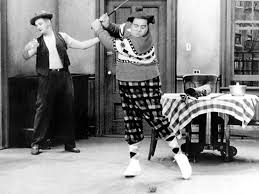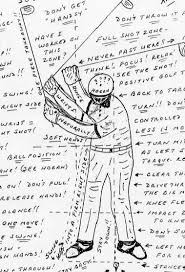Is your handicap going up and you don’t know why? [ THIS MAY BE THE BEST SWING TIP YOU EVERY RECEIVE.] I’ve been suffering from painful ankle tendons each time that I played golf or tennis over the past 2 years. Fortunately during a tennis match (as my ankles started to ache with every step), I strained my left calf muscle. Yes, I said “fortunately” because it forced me to find a Registered Physiotherapist (corrected after publication: an Athletic Therapist does not require the qualifications of a Registered Physiotherapist) to understand the cause of my problem.
Don’t take pain for granted.
When your aging doctor tells you that it’s just old age (like mine did), either tell him you want a referral to a Registered Physiotherapist or find one yourself at qckinetix.com/birmingham/homewood-al. Don’t ignore persistent pain. There is a reason for it and your body and golf game are suffering as a result of it. I was just too stupid or too stubborn to find the right solution, so I paid for it with a higher handicap and more pain. Fortunately I did not tear my Achilles tendon as my therapist pointed out was most likely my next step. Learn how to handle shoulder pain in here with the help of the best chiropractors available here in town.
The mobility of my left hip was tight as a result of an old injury. It caused my ankle tendons to inflame and tighten up. Sounds crazy but my new flexibility is improving my hip rotation and my golf scores are already dropping.

After you get your hips moving make sure you exercise to keep them moving.
Long story short: My Physiotherapist determined that my SI Joint (Sacroiliac joint) which joins the sacrum to the pelvis was not bending properly. After therapy and simple exercise my tendonitis in my ankles has gone away and my golf swing is improving with every round. My therapist NEVER touched my Achilles tendons but she has manipulated my leg and hip and back with amazing results.

Strengthen your Glutes by pulling your belly button toward your back and lift. As you get stronger lift with one leg and the other off the ground.
NOTE: During my search to find a good Therapist I learned that there are different services offered but I really needed a qualified Registered Physiotherapist to correctly diagnose my problem. If you suspect that you have a physical limitation or if you find that golf is causing pain, find a specialist before you really suffer a major setback.

Slow stretching with a single straight leg then bend it for lower calf and tendon stretch.
Unfortunately my Physiotherapist did not have a solution to help me perfect my chipping and putting. I suspect that I need Psychologist or a brain transplant for that.
Postscript: Don’t get back to your active sports until you’ve had time to heal. I tried tennis too soon and had to cancel golf again this week.
Golf Digest and many others highlight that hip mobility and leg strength are the basic building blocks for longer drives. Recent articles about Jason Day focus on his power but it all starts from his legs and hips. If you spend a lot of your time like I do sitting and working on a computer, work on your mobility with simple exercises before you hit the range or golf course. And practice the right swing motion with your GOLFSTR+ for every swing in your game. Buy one today at www.golfstr.com





 Words and thoughts can help or hurt performance:
Words and thoughts can help or hurt performance: